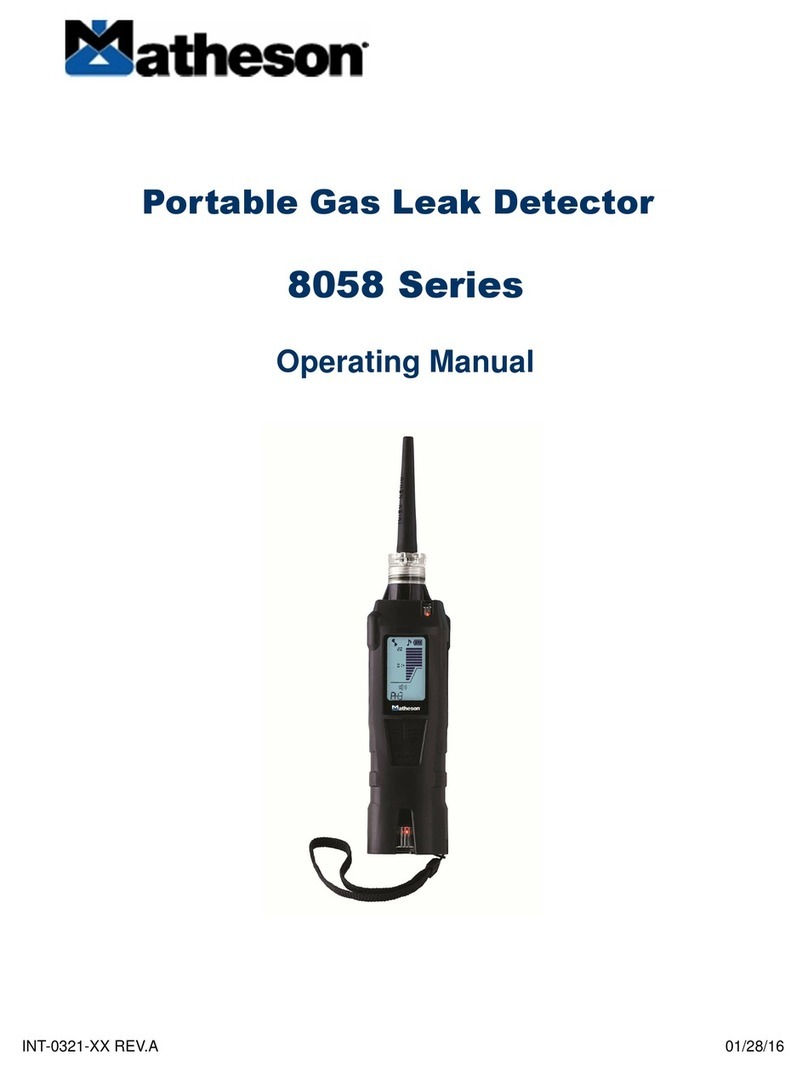
4
Statements
Safety
Please read this manual in full before using the 8068 instrument. MATHESON takes no respon-
sibility for damage, injury or death resulting from misuse, misunderstanding or negligence
while using this gas detector. Please contact MATHESON for clarification on any aspect of this
manual that is not understood or for additional information required.
This instrument should only be used by qualified or competent persons with suitable knowl-
edge of the hazards relating to the gases contained within equipment or in the local environ-
ment.
Quality Assurance
8068 instruments are manufactured in compliance with ISO9001, which ensures that the
equipment supplied to the customer has been designed and assembled reproducibly from
traceable components, calibrated to traceable standards.
Responsibility of Use
Many gases are hazardous and can cause explosion, poisoning and corrosion resulting in dam-
age to property and life. It is the responsibility of the person using this instrument to ensure it
is being used in accordance with this manual and that the instrument is functioning correctly
before use.
The 8068 can detect a large range of gases but some gases are more dicult to detect.
It is the responsibility of the user to ensure the 8068 instrument has the sensitivity to detect
the required gas before reaching potentially dangerous levels.
Inadequate performance of the gas detection equipment described in this manual may not
necessarily be self-evident and consequently equipment must be regularly inspected and
maintained. MATHESON recommends that personnel responsible for equipment use institute
a regime of regular checks to ensure it performs within calibration limits and that a record be
maintained which logs calibration check data. The equipment should be used in accordance
with this manual, and in compliance with local safety standards.
Disposal
Disposal of the 8068, its components, and any used batteries shall be in accordance with local
and national safety and environmental requirements. This includes the European WEEE (Waste
Electrical and Electronic Equipment) directive.
Calibration Facility
MATHESON oers a calibration service including the issue of certification confirming calibra-
tion to NIST standards.
An 8068 Calibration Kit oers a means of checking and calibrating the instruments against a
known reference, however MATHESON strongly recommend the instrument is returned to an
approved service center on an annual basis for general maintenance and calibration.
Legal Notice
While every attempt is made to ensure the accuracy of the information contained in this man-
ual, MATHESON accepts no liability for errors or omissions, or any consequences deriving from
the use of information contained herein. It is provided “as is” and without any representation,
term, condition or warranty of any kind, either expressed or implied. To the extent permitted
by law, MATHESON shall not be liable to any person or entity for any loss or damage which
may arise from the use of this manual. We reserve the right at any time and without any no-
tice to remove, amend or vary any of the content which appears herein.




























